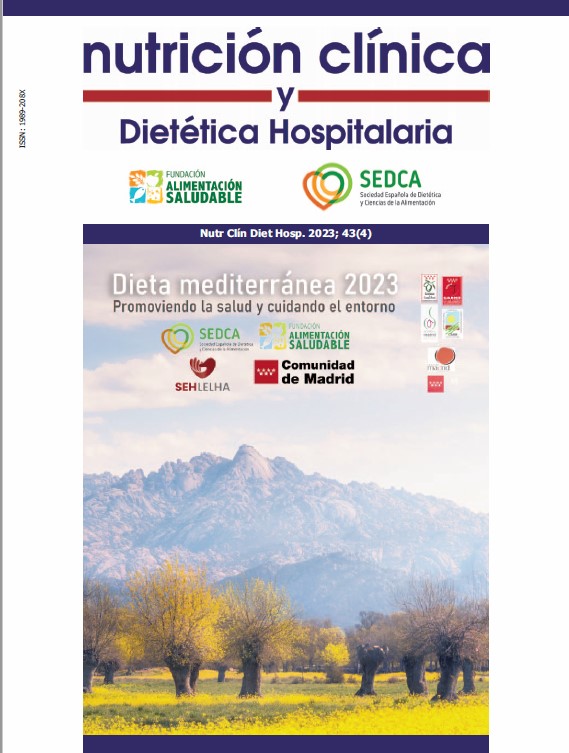Nutritional assessment of students from educational institutions of Barranquilla with food supplement 2017 to 2020
DOI:
https://doi.org/10.12873/434parraKeywords:
Nutritional Physiological Phenomena, Body Mass Index, Weight by Height, School Feeding, Overweight, Thinness, Child Nutritional Physiological Phenomena, Child DevelopmentAbstract
School feeding programs have a direct effect on the nutritional status of the participants that is not considered consistently, since their interest falls on the associated school retention measures. The objective of this study was to evaluate the nutritional status of students from district institutions of Barranquilla who received the food supplement of the School Food Plan (PAE). As analysis measures, height and Body Mass Index (BMI) were considered. A measurement was carried out per semester from the second period of the year 2017 to the last of the year 2020, comparing the results with the growth patterns of the World Health Organization for children and adolescents from 0 to 18 years old, adapted by Colombia in Resolution 2465 of 2016. The measurements were compared by semester to identify significant differences and correlation measurements between each of the variables studied. The one-way ANOVA test and the chi-square test were used. Although the PAE has managed to stabilize as an important supplementation mechanism, it has stagnated in its purpose of reducing the conditions of prevalence of unfavorable BMI and height indices, which makes it necessary to analyze the quality and completeness of the food supplements provided. in the program, taking care that the services delivered correspond to the standards to cover 50% of the caloric and nutritional requirements of those who consume them. Although no significant differences were found based on gender for BMI, some differences with height show that the rates of thinness and obesity are lower in the sector of female participants.
References
Cederholm T, Barazzoni R, Austin P, Ballmer P, Biolo G, Bischoff SC, et al. ESPEN guidelines on definitions and terminology of clinical nutrition. Clin Nutr. 2017. Clinical nutrition. 2017; 36(1): p. 49-64. https://doi.org/10.1016/j.clnu.2016.09.004
Luna J, Hernández I, Rojas A, Cadena M. Estado nutricional y neurodesarrollo en la primera infancia. Rev Cub Salud Pública. 2018; 44(4): p. 169-185. https://www.scielosp.org/pdf/rcsp/2018.v44n4/169-185/es
González JC, Caballero A, Casas MF, Camargo L, Betancur LE, Jaramillo E, et al. Relación entre nivel nutricional e índice de masa corporal en población adolescente. Rev Carta Comunitaria. 2018; 26(149): p. 5-14. https://doi.org/10.26752/ccomunitaria.v26.n149.373
Ministerio de Educación Nacional de Colombia. Programa de alimentación escolar [Internet]; Ministerio de Educación Nacional; s.f. [Consultado el 10 de febrero de 2022]. Disponible en: https://www.mineducacion.gov.co/1621/w3-printer-235135.html#:~:text=%C2%BFQu%C3%A9%20es%20el%20PAE%3F,del%20Sistema%20General%20de%20Participaciones
Calceto-Garavito L, Garzón S, Bonilla J, Cala-Martínez D. Relación del estado nutricional con el desarrollo cognitivo y psicomotor de los niños en la Primera Infancia. Rev Ecuatoriana de Neurol. 2019; 28(2): p. 50-58. http://scielo.senescyt.gob.ec/scielo.php?script=sci_arttext&pid=S2631-25812019000200050&lng=es&tlng=es
Valverde L, Reyes E, Palma C, Emén J, Balladares M. Influencia del estado nutricional en el rendimiento escolar de estudiantes de Educación General Básica Media. RECIMUNDO. 2019; 3(4): p. 528-548. https://doi.org/10.26820/recimundo/3.(4).diciembre.2019.528-548
Pozo J. Crecimiento normal y talla baja. Rev Pediatría integral. 2015; 19(6): p. 411. https://repositorio.uam.es/bitstream/handle/10486/679041/crecimiento_pozo_pi_2015.pdf?sequence=1&isAllowed=y
World Healt Organization Multicentre Growth Reference Study Group. WHO Child Growth Standards: length/height-for-age, weight-for-age, weight-for-length, weight for- height and body mass index-for-age: methods and development. Primera edición.París: World Healt Organization, 2002.
Departamento Nacional de Planeación. Evaluación de la estratificación socio-económica [Internet]; Departamento Nacional de Planeación; 2008. [Consultado el 7 de febrero de 2022]. Disponible en: https://colaboracion.dnp.gov.co/CDT/Sinergia/Documentos/Evaluacion_Politicas_Publicas_10_Estratificacion_Socioeconomica.pdf
Carrasco-Bustos J, Freundlich-Deutsch T, Peñafiel-Ekdhal C, Estay-Larenas J, Vergara-Núñez C. Relación entre la Posición Natural de Cabeza y el Plano de Frankfort. Rev clín periodoncia implantol rehabil oral. 2019; 12(2): p. 74-76. https://dx.doi.org/10.4067/S0719-01072019000200074
Ministerio de salud de Colombia. Encuesta Nacional de la Situación Nutricional: Niños y niñas en la primera infancia [Internet]; Ministerio de salud de Colombia; 2015. [Consultado el 8 de febrero de 2022]. Disponible en: https://www.icbf.gov.co/sites/default/files/infografia_situacion_nutricional_0_a_4_anos.pdf
Selem-Solís J, Alcocer-Gamboab A, Hattori-Hara M, Esteve-Lanaob J, Larumbe-Zabala E. Nutrimetría: evaluando el IMC en función del desarrollo. Endocrinol. Diabetes Nutr. 2018; 65(2): p. 84-91. https://doi.org/10.1016/j.endinu.2017.10.009
Torres-Cárdenas M, Pérez B, Landaeta-Jiménez M, Vásquez-Ramírez M. Consumo de alimentos y estado nutricional según estrato socioeconómico en una población infantil de Caracas. Arch Venez Puer Ped. 2011; 74(2): p. 2-9. http://ve.scielo.org/scielo.php?script=sci_arttext&pid=S0004-06492011000200002&lng=es&tlng=es
Gil-Gil B, Melgar-Quiñonez H, Álvarez-Uribe M, Estrada-Restrepo A. Diferencias en el gasto alimentario según características socioeconómicas y de seguridad alimentaria y nutricional en hogares de Medellín. Perspect Nut Hum. 2017; 19(1): p. 15-25. https://doi.org/10.17533/udea.penh.v19n1a02
Asosiación Médica Mundial. Declaración de Helsinki. Principios éticos para las investigaciones médicas en seres humanos [Internet]; Asosiación Médica Mundial; 2008. [Consultado el 4 de febrero de 2022]. Disponible en: https://www.wma.net/es/policies-post/declaracion-de-helsinki-de-la-amm-principios-eticos-para-las-investigaciones-medicas-en-seres-humanos/
Resolución 8430 de 1993 [Internet]. Bogotá: Ministerio de salud y protección social de Colombia. 1993 [Consultado el 4 de febrero de 2022]. https://www.minsalud.gov.co/sites/rid/Lists/BibliotecaDigital/RIDE/DE/DIJ/RESOLUCION-8430-DE-1993.PDF
Ley Estatutaria 1581 [Internet]. Bogotá: Congreso de la República de Colombia. 2012 [Consultado el 4 de febrero de 2022]. https://bit.ly/2SyYWbr
Resolución 2465 de 2016 [Internet]. Bogotá: Ministerio de salud y protección social de Colombia. 1993 [Consultado el 4 de febrero de 2022]. https://www.minsalud.gov.co/Normatividad_Nuevo/Resolucion%202465%20de%202016.pdf
Ministerio de salud de Colombia. Encuesta Nacional de la Situación Nutricional 2015. Población en edad escolar y adolescentes [Internet]; Ministerio de salud de Colombia; 2015. [Consultado el 8 de febrero de 2022]. Disponible en: https://www.icbf.gov.co/sites/default/files/infografia_situacion_nutricional_5_a_12_y_13_a_17_anos.pdf
Downloads
Published
How to Cite
License
Copyright (c) 2023 Nutrición Clínica y Dietética Hospitalaria

This work is licensed under a Creative Commons Attribution-NonCommercial-NoDerivatives 4.0 International License.
Los lectores pueden utilizar los textos publicados de acuerdo con la definición BOAI (Budapest Open Access Initiative)



